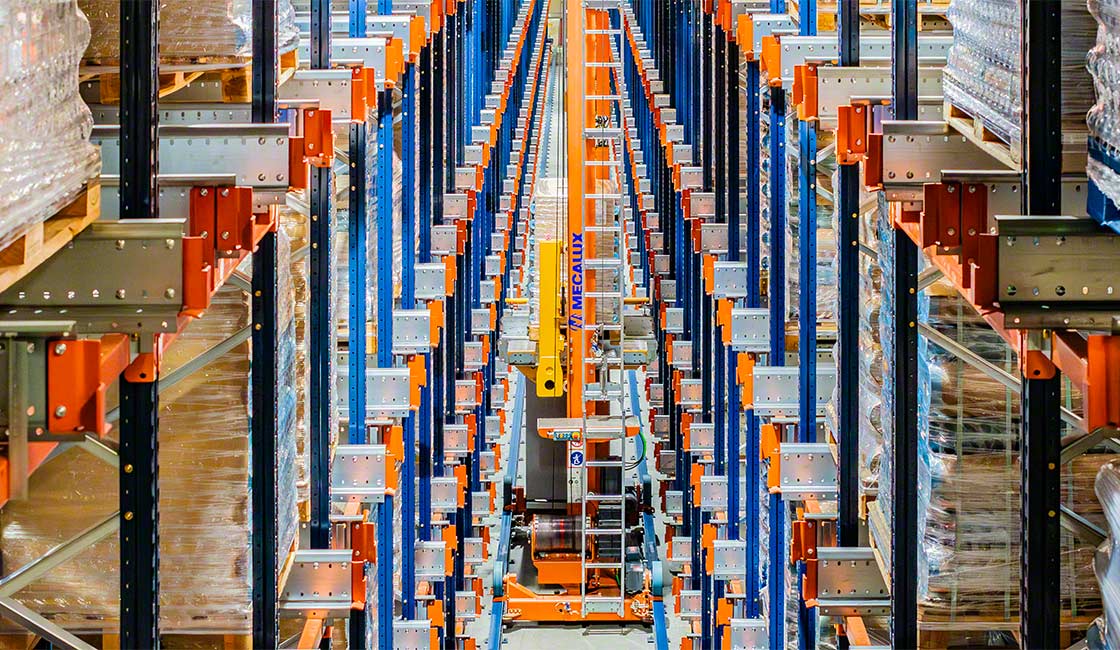
Sour grapes: the limitations of wine as an asset class
Opinions expressed whether in general or in both on the performance of individual investments and in a wider economic context represent the views of the contributor at the time of preparation.
Executive summary: drinking wine and investing in it are two very different things. While the broad logic in seeking portfolio diversification and increasing allocations towards real assets has only grown since the financial crisis, the evidence regarding the performance of wine as an asset class is mixed at best. Should investors decide to allocate to wine, then it ought only be a very small percentage of their wealth, held for the long-term.
In addition to managing money at Heptagon Capital, the author of your piece is also a keen oenophile, having studied wine professionally for the last five years. Having recently been awarded an Honours Diploma (one level below a Master of Wine qualification) for a dissertation submitted on the topic of “What makes a good investor in fine wine? An understanding of the limitations and the creation of an appropriate investment framework”, we thought a number of our clients may be interested in reading a condensed version of the piece. A full version is also available.
The production, consumption and collection of fine wines can be traced back over several thousand years, but it is only in recent times that interest levels among both high-net-worth and retail investors have risen. Unsurprisingly, many in the wine industry assert that wine is perhaps the ultimate asset, offering above-average returns and below-average risk. However, a more robust and rational analysis suggests that if wine is viewed as simply just another asset class then it should not only constitute a very small portion of an individual’s net worth, but should also be viewed as a long-term investment. When assessed over shorter time periods, wine’s performance has been significantly more volatile.
Four main arguments are typically made to support the case for investing in wine: a supply-constrained market, increasing levels of demand, the growing search for real assets and the potential benefits of portfolio diversification. Taking the main arguments in turn, the available quantities of fine wines have always been limited, primarily as a function of geography (vineyard size) and legal constraints (prescribed production levels). There is also a strong logic for producers of fine wine to decrease yield in order to increase further the quality of their output. No more than 30,000 cases of Chateau Lafite are, for example, produced annually, while for smaller vineyards such as Pétrus, output may only be around 3,000 cases a year. By contrast, a large-scale Australian or Californian winery might produce 500,000 cases annually.
The shortage of supply of the world’s finest wines is exacerbated by growing demand for such products. This is driven primarily by a wealth effect, namely owing to the Western world having emerged from recession and many developing economies increasingly industrialising, the number of wealthy individuals is growing. In its 2014 Wealth Report, Credit Suisse estimates that total global household wealth will rise by almost 40% in the five years to 2019. At present, there are 35m millionaires globally (in US Dollar terms) and although they account for less than 1% of the world’s population, they collectively command more than 40% of the world’s wealth. In five years’ time, Credit Suisse forecasts that this figure will have expanded by around 50%, to over 50m. It seems likely that some of this (newly created) wealth will be allocated to wine and other luxury items, particularly given the status they impart.
However persuasive these arguments might be, the evidence suggests that actually investing in wine has generally not proven to be a compellingly effective strategy for delivering consistently superior returns. A potential investor looking at recent history would, unsurprisingly, be deterred from investing in wine given that the Liv-ex 100 Fine Wine Index (the de facto benchmark, launched in 2001, hereafter referred to as the Index) has fallen for 16 of the last 19 months and lost money for each of the last three calendar years, a period in which equities, for example, have delivered substantial returns. Although wine outperformed equities in 2010, five-year annualised returns from investing in the Index are close to zero, relative to a 12% gain for the MSCI World.
An alternative perspective is provided by Knight Frank, the estate agent and global property consultancy. Their annual Wealth Report highlights that while investing in fine wine (the Index) may have delivered an impressive absolute gain of 176% over the last ten years (well ahead of the global equity market, up 69%), this rise has been only in line with the broader Knight Frank Luxury Investables Index (up 179%) and behind the returns generated by investing in art, coins, stamps and cars. Over the last five years, Knight Frank’s data show that relative to other collectibles/ luxury assets, only art and furniture have delivered returns inferior to fine wine.
The results provided by academic studies are also not wholly persuasive. Elroy Dimson and his team at the London Business School demonstrate in their 112-year study of Bordeaux First Growths (1900-2012, the longest period over which wine’s performance has been assessed), that while wine’s annualised returns do exceed government bonds, art and stamps, they underperform equities. The authors also note several limitations in their study, not just the focus on only five wines (which may not constitute a meaningful benchmark or dataset), but the more crucial fact that when transaction and storage costs for wine are factored in, the actual returns that would be available to investors obviously shrink. Elsewhere, several other academics have also questioned the potential benefits to investors from portfolio diversification.
Furthermore, an increasing wealth effect and logic of seeking to preserve capital support the case for making an allocation towards alternative luxury or ‘passion’ assets in general and do not relate to fine wine specifically. Moreover, just as only limited quantities of the finest wines are produced, the same is true of other potentially comparable assets such as classic cars, antique coins or, in the extreme, art works (where only one version of a painting is typically made). In other words, the arguments that are made for explaining why investors might be attracted to fine wine seem only to be necessary rather than sufficient.
It therefore seems likely that other reasons may also exist to explain why people invest in wine. Fine wine is perhaps different to other investments (whether conventional or luxury) in the sense that it can also be consumed. Economists characterise wine as an ‘experience good’ – in other words, its quality is unknown prior to consumption. In contrast, say, to art or watches, the market for fine wine is based on consumption; clearly, as more people consume a finite supply, prices of the product should rise, all other things being equal. Moreover, since investors have likely consumed the wines in which they are investing (or very similar products), they may also perceive that they understand the relative merits of wine as an asset class.
Daniel Kahneman, one of the most highly regarded academics in the field of behavioural economics, discusses in his work Thinking, Fast and Slow (2012) how individuals often develop simple procedures that help them find adequate, though often imperfect, answers to difficult questions. When considering wine, it is likely that investors may be applying several such biases, whether unintentionally or not. These encompass familiarity – the desire to invest in something that is simple, tangible and easy to understand; affect – the phenomenon whereby people may be willing to pay more for something they like and makes them feel happy; and attribution – the systematic errors made when trying to find explanations for behaviour. With regard to the latter, it may be the case that if prices are rising, people think of wine as an investment, whereas if prices are falling, people may instead characterise their purchase decision as being something that was made simply because they liked the product. All these biases are only likely to have become more pronounced since the most recent financial crisis.
Beyond these limitations, investors also need to be cognisant of two other factors: liquidity and cost. With regard to the former, liquidity clear matters particularly for those who may have requirements to trade their portfolios with the intention of realising capital within a certain defined time period. Low traded volumes combined with the absence of active market participants (willing buyers or sellers) may also result in clearing prices becoming excessively pronounced in either direction. Moreover, despite the increased transparency provided in the fine wine market by trading exchanges, in an interview of April 2014, a senior executive at Liv-ex still characterised the market as being “very inefficient” owing to its “lack of [traded] volumes.” The primacy of liquidity also partly helps to explain why wine professionals typically assert that a long-term investing perspective is required when considering the merits of wine as an asset class.
There are also clear costs attached to investing in fine wine. Merchants typically charge a 10% margin on any transaction, whereas a typical buyers’ premium at auction would be 17.5%, with sales commission being similar to that charged by merchants. Elsewhere, dedicated wine funds tend to charge an annual management fee of 2% as well as a typical performance fee of 20%. These charges are higher than for many more conventional financial products such as equity or credit funds and reflect the additional costs attached to investing in wine such as storage, transportation and insurance as well as the relative lack of scale of such funds (assets under management are rarely above $100m, and often substantially lower), implying that fixed costs such as premises and salaries need to be shared across a smaller base of investors.
Given these limitations, it is worth considering what factors might make wine investing a more alluring or approachable. With limited transparency around production and consumption volumes, any improvements in this respect such as the creation of a central depository of ownership of fine wines (akin to a shareholder register for a listed business) would help improve the market’s efficiency. However, this would take time and also need to reconcile the many competing interests of the wine industry. Over the longer-term, were the investable fine wine market to grow in efficiency, it might also be possible to envisage further mechanisms for investors to gain access to the market, such a fine wine futures or ETFs. For now, such products seem a somewhat distant prospects and fine wine should, practically, be considered as something primarily for drinking, or investing in with a high degree of caution.
Alexander Gunz, Fund Manager
Disclaimers
The document is provided for information purposes only and does not constitute investment advice or any recommendation to buy, or sell or otherwise transact in any investments. The document is not intended to be construed as investment research. The contents of this document are based upon sources of information which Heptagon Capital LLP believes to be reliable. However, except to the extent required by applicable law or regulations, no guarantee, warranty or representation (express or implied) is given as to the accuracy or completeness of this document or its contents and, Heptagon Capital LLP, its affiliate companies and its members, officers, employees, agents and advisors do not accept any liability or responsibility in respect of the information or any views expressed herein. Opinions expressed whether in general or in both on the performance of individual investments and in a wider economic context represent the views of the contributor at the time of preparation. Where this document provides forward-looking statements which are based on relevant reports, current opinions, expectations and projections, actual results could differ materially from those anticipated in such statements. All opinions and estimates included in the document are subject to change without notice and Heptagon Capital LLP is under no obligation to update or revise information contained in the document. Furthermore, Heptagon Capital LLP disclaims any liability for any loss, damage, costs or expenses (including direct, indirect, special and consequential) howsoever arising which any person may suffer or incur as a result of viewing or utilising any information included in this document.
The document is protected by copyright. The use of any trademarks and logos displayed in the document without Heptagon Capital LLP’s prior written consent is strictly prohibited. Information in the document must not be published or redistributed without Heptagon Capital LLP’s prior written consent.
Heptagon Capital LLP, 63 Brook Street, Mayfair, London W1K 4HS
tel +44 20 7070 1800
email [email protected]
Partnership No: OC307355 Registered in England and Wales Authorised & Regulated by the Financial Conduct Authority
Heptagon Capital Limited is licenced to conduct investment services by the Malta Financial Services Authority.



